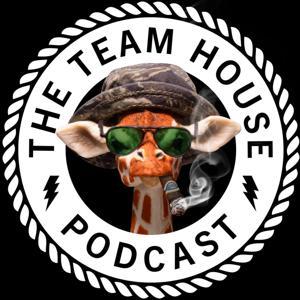Think the Boston Tea Party made America a coffee-drinking nation? Historian Michelle McDonald reveals the truth: colonists were already choosing coffee over tea because it was cheaper.
Michelle Craig McDonald, the Librarian/Director of the Library & Museum at the American Philosophical Society and author of Coffee Nation: How One Commodity Transformed the Early United States, explains how coffee shaped American identity long before the Revolution.
You'll hear about Revolutionary-era women storming a Boston warehouse to seize hoarded coffee and sell it at regulated prices. You'll discover why Parliament protected coffee while taxing tea. And you'll learn how enslaved Caribbean laborers made America's favorite beverage possible.
From colonial coffee houses to debates about caffeine addiction in the early republic, discover how one imported commodity became distinctly American.
Michelle's Website | Book |
Show Notes: https://www.benfranklinsworld.com/429
EPISODE OUTLINE
00:00:00 Introduction
00:03:20 Meet our Guest
00:04:35 Coffee vs. Tea in Early America
00:06:50 Coffeehouses and How Coffee Was Served
00:08:04 Medical Concerns About Coffee
00:09:12 Coffee Production
00:12:35 Attempts to Grow Coffee in North America
00:14:04 The Use of Enslaved Labor in Coffee Cultivation
00:19:50 The Early American Market for Coffee
00:22:21 Early American Coffee Connoisseurs
00:29:57 Early American Coffeehouses
00:34:48 Coffee and the American Revolution
00:36:40 The Boston Coffee Riot, 1777
00:42:48 Coffee in the Early Republic
00:45:00 Coffee and the Haitian Revolution
00:47:53 Early Republic Attempts to Grow Coffee
00:50:55 Early Republic Coffee Culture
00:53:56 Time Warp
00:58:31 Conclusion
RECOMMENDED NEXT EPISODES
🎧 Episode 160: The Politics of Tea
🎧 Episode 161: Smuggling and the American Revolution
🎧 Episode 288: Smugglers & Patriots in the 18th-Century Atlantic World
🎧 Episode 294: 1774, The Long Year of American Revolution
🎧 Episode 319: Cuba: An Early American History
🎧 Episode 401: Tea, Boycotts, & Revolution
SUPPORT OUR WORK
🎁 Make a Donation to Ben Franklin’s World
REQUEST A TOPIC
📨 Topic Request Form
📫 [email protected]
WHEN YOU'RE READY
🗞️ BFW Gazette Newsletter
👩💻 Join the BFW Listener Community
🌍 Join the History Explorers Club
LISTEN 🎧
🍎 Apple Podcasts
💚 Spotify
🎶 Amazon Music
🛜 Pandora
CONNECT
🦋 Liz on Bluesky
👩💻 Liz on LinkedIn
🛜 Liz’s Website
SAY THANKS
💜 Leave a review on Apple Podcasts
💚 Leave a rating on Spotify
*Book links are affiliate links. Every purchase supports the podcast.
Learn more about your ad choices. Visit megaphone.fm/adchoices




















































